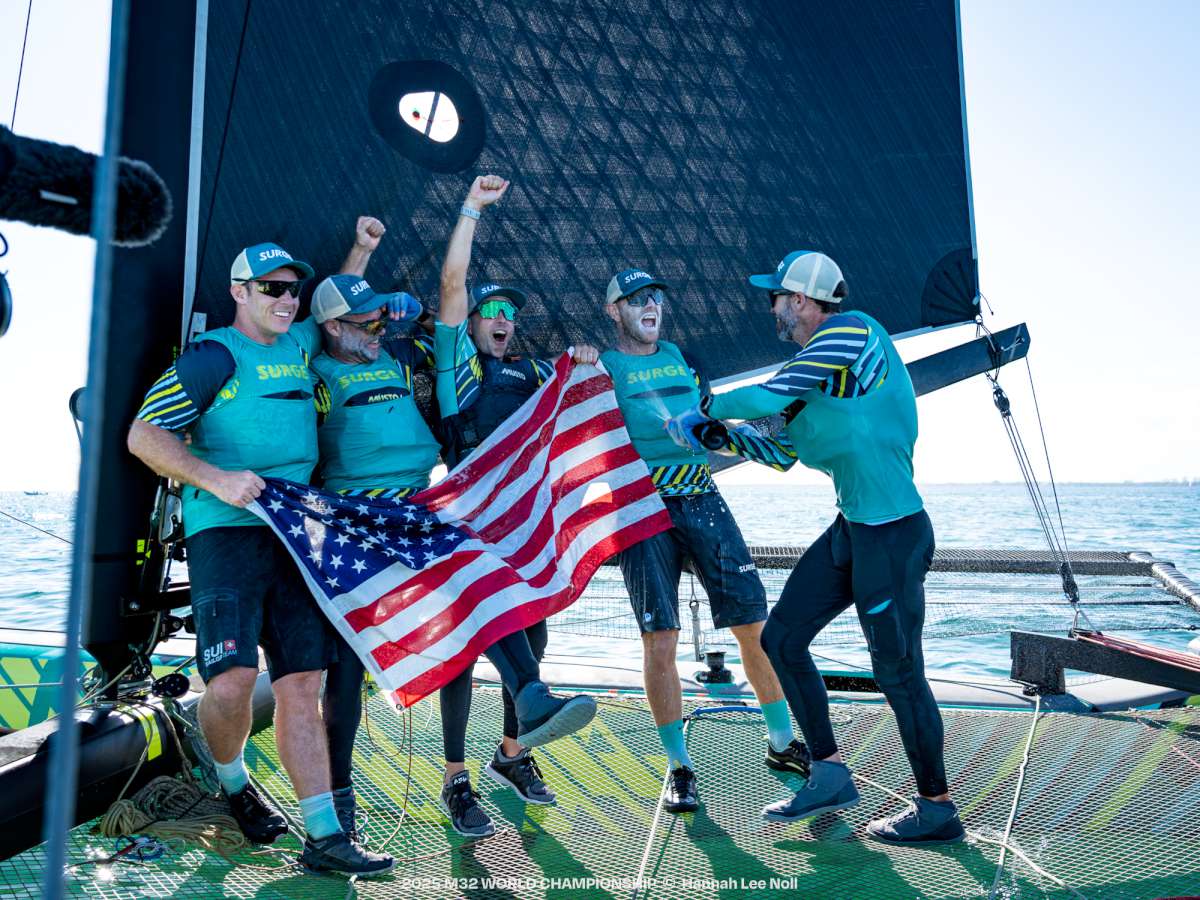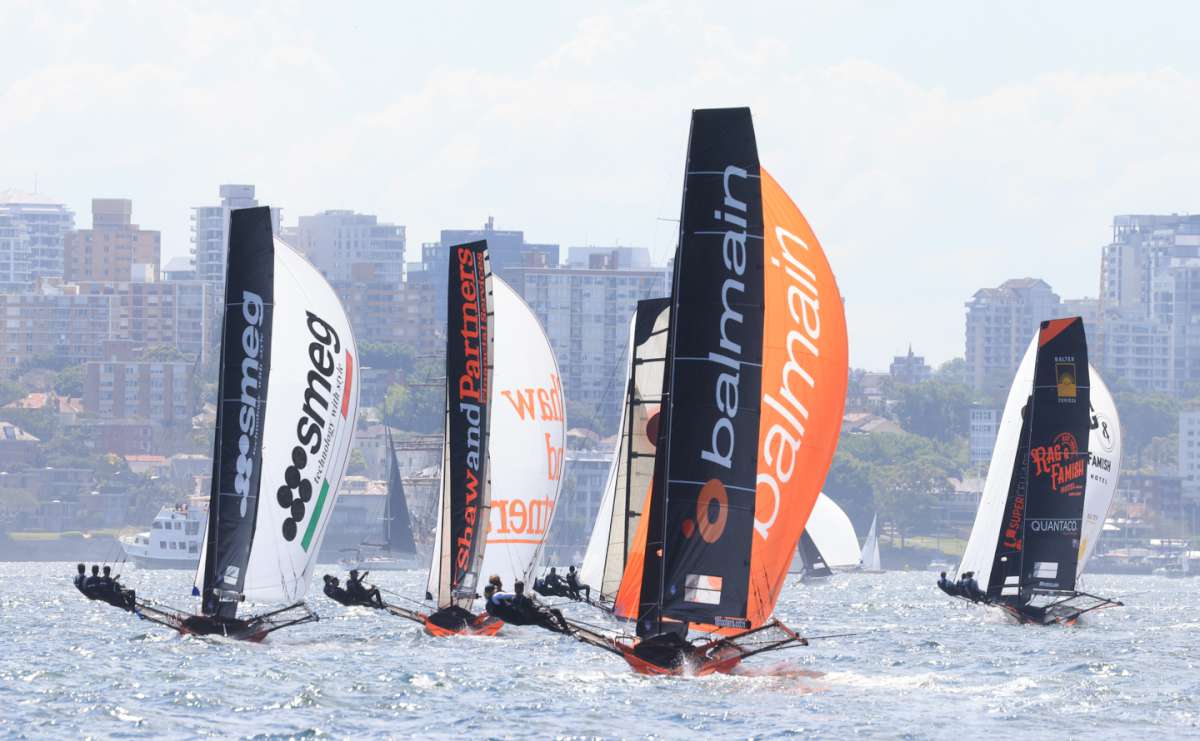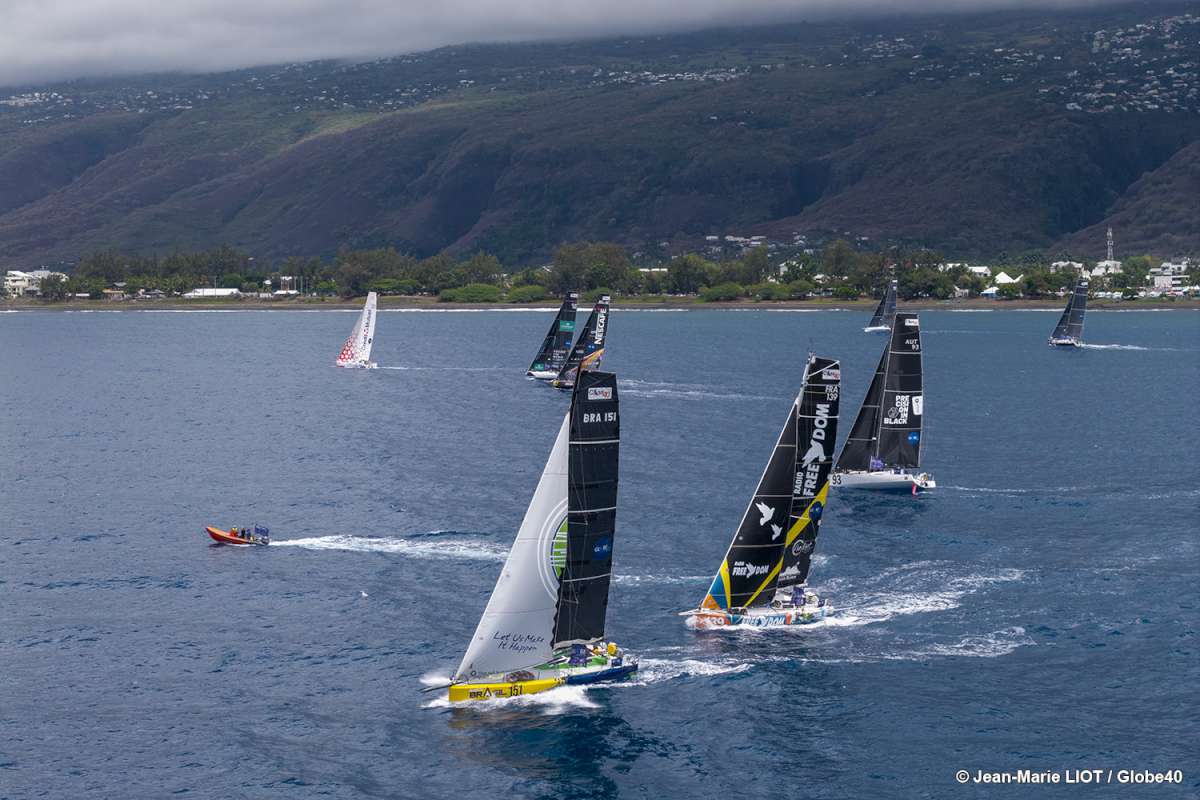Destinations: Cuba
Don and Agnes Reed encounter an intriguing land not without its challenges when they venture south from Florida to the homeland of Fidel Castro.
Cuba lies just 80nm south of the Florida Keys in the US and if a yacht is heading to the Panama Canal from the US east coast it is in the path. It is also a possible destination after cruising the Caribbean islands or the east-Mexican coast. The island of Cuba lies in a general SE-NW direction and the prevailing winds are easterly, so ideally one should sail along Cuba's coast in an anti-clockwise direction.
The political relationship between Cuba and the US has made it difficult for cruising yachts from the US to go to Cuba, so there are not many cruising yachts in Cuba. We had three weeks in Cuba, and only sailed along the NW and SW coasts and so our experience was limited. We do not speak Spanish and this meant we could not communicate very well.
Getting there
Our passage from Marathon in the Florida Keys to Marina Hemingway was approximately 100 nautical boisterous miles. The current runs from the west at 2-3 knots, we had easterly winds of 25-33 knots, and this is the perfect recipe for a rough crossing. Fortunately it is only 100nm. We did an overnight run to make sure we arrived in daylight and were pleased to find the entrance marker buoy at the GPS co-ordinates in the guide. The sea depths are up to 2000m, rising rapidly close to the Cuban coast to 1000m 3.5 miles off and then 200m just half of a mile from shore. The narrow entrance through the reef into the marina would be very dangerous with a large northerly swell.
Marina Hemingway
As we entered the channel to Marina Hemingway a uniformed man waved us on through and around the corner to tie up for the formalities. The clearance dock mentioned in the guide book was in ruins. Marina Hemingway lies nine miles west of the capital Havana, on the north coast. It is a very tired, large, mostly empty marina built in the early 1950s with about 15 foreign yachts in February 2009, only eight of those actually cruising. The paperwork and official procedure is a long drawn-out business, as we had been warned. We were visited by representatives from health, coast guard, immigration and customs and a couple more, who lined up on the dock patiently waiting their turn. Customs searched the yacht thoroughly but did not take any US food away, as the guide book suggested they might, which was good because it would have been difficult, expensive or impossible to replace. We were very glad we had lockers full of US food. In the three weeks we did not manage to buy one piece of fresh fruit!
It appears the Cuban officials would like the yachts to stay in marinas where they can keep an eye on you. To cruise freely around was tolerated but looked upon with suspicion. We were required to list all our intended possible ports and required to check in to these each time, which meant more paperwork, checks and boat searches.
Havana and surrounding countryside
We did enjoy exploring the city of Havana, which was easily accessible (by a well priced tourist bus from the marina). The city reflected its rich Spanish history with some grand old buildings and well-planned wide boulevards. The inner city car-free zone was a delight to wander around and there we even found a bakery, with the expected queue of locals. Many buildings have been restored to their former glory but unfortunately the restoration and maintenance program is slow and losing ground in most areas.
Back at the marina we hired a car and guide and did a day tour into the countryside. We asked him lots of questions, because he spoke good English, so were able to gain a small insight into Cubans' everyday lives.
I got the impression there is the distinct difference between the watchers (guards, officials and anyone in government-paid jobs) and the watched (ordinary Cubans). The government people are well fed with meals provided, comfortably housed, driven around in government vehicles and uniforms supplied. The rest are discouraged from private enterprise (by high taxes) but guaranteed a minimum amount of food and basic housing. Most people seemed to be healthy, perhaps because of their forced low-fat diet and having to walk a lot.
Car ownership is extremely expensive and long bus queues common. The horse and cart are still in daily use out of the city. Don enjoyed the array of old American cars that have been kept running (usually as taxis) spewing fumes and dripping oil as they went. The standard of health and education is reasonable and free but from the bits I saw very outdated.
There was a guard for every four yachts in the marina, and we were not sure if he was watching us, guarding us or making sure no Cubans came aboard, which is forbidden. Cuba's climate is similar to coastal SE Queensland but the small part of the countryside we saw was sadly underutilised, apparently because of poor management practices and government policies, so good farming and grazing land was idle even while meat, fruit and vegetables were in very short supply.
Costs
We thought it would be inexpensive cruising in Cuba, but a few things influenced costs. Firstly we were advised to bring US dollars. The Cuban government has a dual currency running and the tourist dollars called CUCs are what tourists must shop with. When we got there, they were not too keen on US dollars and gave a poor exchange rate of $1.2 for their tourist dollars, so a CUC cost us A$2. Fortunately rum was still a good deal at A$4.70 a bottle. Canada and Cuba had closer ties and the Canadian dollar was getting a much better exchange rate. They could not exchange Australian dollars. An ATM cash withdrawal on credit cards worked on the few machines we found. Prices using the local money were very low, but we were not supposed to use it.
Northwest coast
Sailing directly, non-stop west from Marina Hemingway to the western capes and on around to the SW coast took us two days. The reason we did that was because time was limited, the north coast was more exposed to the strong, cold north winds from the US cold fronts in January and February and the anchorages along this coast were shallow and between reefs. We had recently experienced the blast from these fronts while in the US and, we felt the need to find good safe anchorages. We had also been told the guards along the north coast are expected to keep a close watch on foreign yachts who could be smuggling locals to the US.
Unfortunately, we could not buy the hoped-for Cuban charts (sadly out of print) to supplement the very poor electronic ones, with no detailed charts available. The 10 year out-of-date guide book has very good chartlets but the text information often was incorrect, especially where the recent hurricane damage was bad.
Poorly marked passes
Our first anchorage was off a remote dive resort at Maria la Gorda, where we were again cleared in. We went for a walk along the beach looking for the small marina described in the guide book as having depths of a half a metre, but is now dry and full of sand! You could buy a meal at the café and restaurant. The anchorage was exposed to the SW and N but in the easterly winds we had it was a pleasant stop.
The southwest coast is dominated by the large, shallow Golf de Batatano with a fringing reef on the southern side and mangrove coastline in the north. We draw only 1.65m with the board up but much of the large gulf is shallow with depths of 1-5m but the majority less than two metres. There were a number of good anchorages on southern coral cays where there are no officials, plentiful fish and even the much talked about crayfish still to be had.
When we ventured into the gulf we entered through very shallow unmarked channel and the fishing platform mentioned in the guide book that was to help us find the pass was gone. We headed for a waypoint and just as we crossed from depths of 200m to five metres in less than half a mile, a fog rolled in. Fortunately it was calm enough to anchor, so we did until the fog cleared and then we slowly edged forward, hoping we were in the right place because the water quickly went to 1.8m deep, through the pass. In anything but calm weather you could not use this pass.
Island visit
The guide book said that Isla de la Juventude was the garden island and the town of Nueva Gerona was pretty and less rundown then most Cuban cities, so in search of a pleasant town, fresh vegetables and fruit and a dentist we sailed there. The officials were not happy about us anchoring out in the bay near the town, so asked us to move up the river, and after we were neatly tied to the ferry dock surrounded by a wire fence, we were cleared in and searched, and given a guard. We set off to explore the town. I found the dentist willing to help me and sat waiting patiently for my turn. I spoke no Spanish and the dentist very little English but the problem was obvious. I was not charged, but I gave her a tip of $20, the equivalent of a week's wages. My brief close-up look at the dental clinic reminded me of my dentist visits 45 years ago.
The vegetable market on the way home was the saddest I have seen. The two stalls both offered only garlic, onions, tomatoes and cabbage. The town had suffered in the hurricane in 2008 and was struggling to clean up the mess. We left late in the afternoon to avoid another night in the river that drained the town's sewers but not before we cleared out with the officials and were searched again.
Crayfish
The pass that we need to go through to get to Cayo Largo had lost its markers in the hurricane, and we were pleased to find the few sticks the fishermen had put in. However, it was not easy to decide which side of them was the deeper water because the water here was muddy. We edged slowly through the pass after another yacht who was travelling with us ran aground.
Again we were pleased there were light winds and smooth seas. If you were caught here in any strong winds it could be very dangerous because it is so shallow.
As we moved SE towards Cayo Largo and stayed in anchorages just on the inside of the fringing reef the passes were better marked, the water cleared, and we found sandy beaches and pleasant anchorages. Early one evening a fisherman rowed up to us, and we negotiated a deal to trade two large crayfish for a bottle of rum. In this area crayfish were plentiful and easy to purchase; however, they technically belong to the government and the fisherman ran the risk of a jail sentence by selling them to us.
Cayo Largo is a total tourist island with very pretty beaches. There is a marina and some facilities to cater for the tourists and yachties and a small charter fleet of catamarans. We sailed directly from Cayo Largo to the San Blas Islands in Panama in four and a half days.
Conclusions
As for a place to come sailing, January and February are not the best months to be doing it, the navigation difficult and the number of safe, comfortable anchorages very spread out and limited. The officials, although extremely polite, required yachts to check in at each town (not on the reef anchorages) with searches each time. This made me feel like we were under suspicion. They were not consistent, so the rules and expectations depended on the officials. The searches, although done politely were, we were told, looking for weapons and as you left, escaping Cubans, even with sniffer dogs with booties on in some places.
I think we were in the wrong part of Cuba in the wrong months. Our experience would have been much better if we had spoken some Spanish. There are other nice cruising grounds in other countries.
For me, our limited Cuban experience was interesting but stressful.
FACTS AND FURTHER INFO
Tough cruising grounds
Of the small number of cruising yachts that were there when we were, one small yacht ran aground in a shallow channel into a harbour and the local fishermen did not offer (or were not allowed) to help him off. Another limped into Marina Hemingway with a swamped engine after taking a large wave over his stern as he rounded the cape (lot of wind against current there). Another two yachts that set off along the north coast day-hopping decided the officials were too painful, the capes too hard to round and instead of cruising along the south coast as planned, headed off to Mexico. It is not easy cruising here in this part of Cuba and the usual support of readily available good charts and guides, yachting repair facilities and sheltered anchorages, in poor weather conditions, are lacking.
Shopping
We did not have to buy much in Cuba but the few shops we did go into had a pitiful display of groceries, a few odd things in a small freezer and a limited selection of shampoos etc.
Rum was well priced and readily available. Fresh bread is a challenge to find, as is fresh fruit and vegetables. Prices were higher than in the US when using the official tourist dollars, and it is not legal for tourists to use the local currency.
Good things
• Rum was cheap.
• Crayfish can be traded for rum.
• The people are friendly.
• The south coast had some
beautiful islands.
• There are not many cruising yachts.
References
• Cuba: A Cruising Guide by Nigal Calder, published by Imray, Laurie and Wilson 1999 (last updated so some of the information was incorrect but chartlets are good).
• Cuba Moon Handbooks Published by Avalon Travel publishing
• A set of charts (Cuba divided into seven regions) produced by Instituto Cubano de Hydrografia. Helpful because electronic charts are limited. Usually available in Havana (some out of print when we were there) at Tienda de Navigantes.























